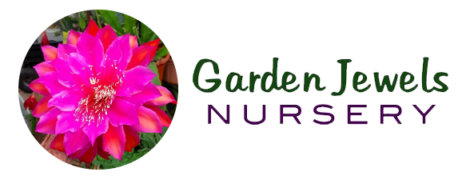|
Epi Care by Season Autumn (aka Fall) September – October – November |
|
It is important that you give your epis adequate light while also protecting them from the southern sun exposure. You can damage your plants foliage with too much sun exposure in combination with higher temperatures and low humidity.
Water
As always, continue to check your plants weekly for soil moisture. Autumn can mean heavy rains and high temperatures. This combination can lead to root rot. If you have this problem, you need to assess your soil mixture and pot drainage. You might need to add larger soil particles (sponge-rock/redwood bark) to your soil and you might need to drill additional holes in the bottom and/or sides of your plastic pots. If you are experiencing infrequent or no rain, water and mist your plants on a regular basis.
Temperature
You should mist your plants to keep them cool. If you are in an arid area – you should mist daily. It is best to mist in the evening.
Nutrition
Fertilize once more before your plants go into dormancy. A balanced “slow released” fertilizer such as 10-10-10 or 14-14-14 can be used as a final feeding before the onset of cool weather. Once winter weather comes discontinue feeding. This will enable your plants to go into dormancy which is necessary for Spring blooms. Plants that are too young to flower the following season should continue to be fed during the dormancy period.
Grooming
This is a good time to check the legibility of name labels. Give your plants their end of season pruning. Blooms only grow from live areoles. Therefore, stems with few viable areoles will produce few flowers, and use energy that good stems could use to produce better blooms. A brown knot where the areole should be means that areole is dead. Sometimes the whole edge of a stem is dead, including the areoles. This is a candidate for trimming.
Your epi will tell you which branches you need to discard. Branches that appear to be dehydrated and turning yellow as compared to greener and more fully hydrated ones should be removed. Break or snap any unwanted growth or use clear shears. You need to stay ahead of weeds. Oxalis, one of the most common and tenacious weeds seen in epi pots, has a long tap root that must be removed or it will regenerate. Remember to wear latex gloves to protect your hands from the majority of epi spines.
Planting & Repotting
Autumn is still an appropriate time for planting and repotting. You should pot “raw” cuttings with the areoles or notches facing upward in a dry to moderately moist soil no deeper than 1 ½ inches to 2 inches. Mist the cuttings for several weeks – do not saturate the soil. As your cuttings take root they will often produce roots from the areoles above the soil level and at the terminal end – this is a sure sign that your cutting is rooting beneath the soil. Once your cuttings have taken hold, they will begin to re-hydrate and may be watered lightly.
Re-potting
If your plant shows stress it’s likely due to the loss of moisture and nutrition. This less than desirable appearance will ordinarily improve as the plant regains itself. If you feel that your plant is suffering from a waterlogged root system, this could be caused by poor pot drainage or excessive rainfall, remove your plant from its pot and inspect your roots. When a root mass has completely rotted, the best solution is to remove the roots completely. You will need to allow your plant to callous, then repot your plant in a new mixture. Plant your epi deeper than a plant with an intact root system. This will allow adventitious roots to form above the original intersection between once existent roots and growth.
Pests
Inspect your plants for insects. Scale and mealy bugs are usually the most prevalent pests at this time. Sprayed soutions of Malathion or insecticidal soaps are usually the best for most insects. If you experience an infestation of scale you might have to remove the plant from its pot a give it a complete scrub-down with a toothbrush saturated with one of the insecticides mentioned above. Remember to put out snail and slug bait.
Flowers
You might have some off-season bloomers they will produce during the fall months, however, for the most part the blooming season has passed.
|

619-987-6251
Garden Jewels Nursery is San Diego's primary resource for Epiphyllums, or Epi- Hybrids & Species,
Oxypetalum, Orchid Cactus, Jungle Cactus, Hookeri, E. Crenatum and Semi Shade Plants.
Oxypetalum, Orchid Cactus, Jungle Cactus, Hookeri, E. Crenatum and Semi Shade Plants.
